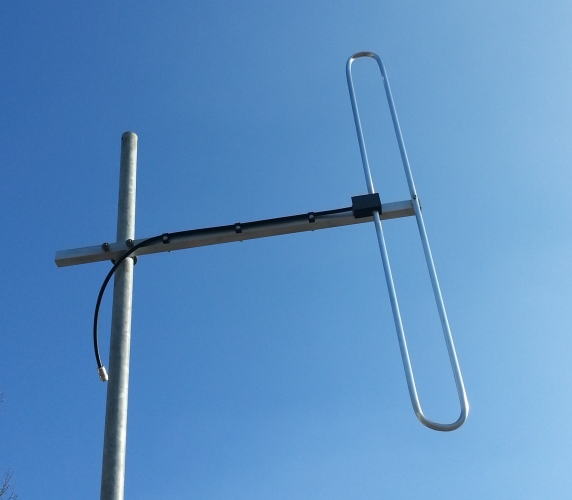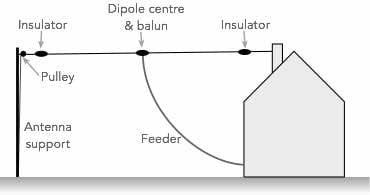Products Category
- FM Transmitter
- 0-50w 50w-1000w 2kw-10kw 10kw+
- TV Transmitter
- 0-50w 50-1kw 2kw-10kw
- FM Antenna
- TV Antenna
- Antenna Accessory
- Cable Connector Power Splitter Dummy Load
- RF Transistor
- Power Supply
- Audio Equipments
- DTV Front End Equipment
- Link System
- STL system Microwave Link system
- FM Radio
- Power Meter
- Other Products
- Special for Coronavirus
Products Tags
Fmuser Sites
- es.fmuser.net
- it.fmuser.net
- fr.fmuser.net
- de.fmuser.net
- af.fmuser.net ->Afrikaans
- sq.fmuser.net ->Albanian
- ar.fmuser.net ->Arabic
- hy.fmuser.net ->Armenian
- az.fmuser.net ->Azerbaijani
- eu.fmuser.net ->Basque
- be.fmuser.net ->Belarusian
- bg.fmuser.net ->Bulgarian
- ca.fmuser.net ->Catalan
- zh-CN.fmuser.net ->Chinese (Simplified)
- zh-TW.fmuser.net ->Chinese (Traditional)
- hr.fmuser.net ->Croatian
- cs.fmuser.net ->Czech
- da.fmuser.net ->Danish
- nl.fmuser.net ->Dutch
- et.fmuser.net ->Estonian
- tl.fmuser.net ->Filipino
- fi.fmuser.net ->Finnish
- fr.fmuser.net ->French
- gl.fmuser.net ->Galician
- ka.fmuser.net ->Georgian
- de.fmuser.net ->German
- el.fmuser.net ->Greek
- ht.fmuser.net ->Haitian Creole
- iw.fmuser.net ->Hebrew
- hi.fmuser.net ->Hindi
- hu.fmuser.net ->Hungarian
- is.fmuser.net ->Icelandic
- id.fmuser.net ->Indonesian
- ga.fmuser.net ->Irish
- it.fmuser.net ->Italian
- ja.fmuser.net ->Japanese
- ko.fmuser.net ->Korean
- lv.fmuser.net ->Latvian
- lt.fmuser.net ->Lithuanian
- mk.fmuser.net ->Macedonian
- ms.fmuser.net ->Malay
- mt.fmuser.net ->Maltese
- no.fmuser.net ->Norwegian
- fa.fmuser.net ->Persian
- pl.fmuser.net ->Polish
- pt.fmuser.net ->Portuguese
- ro.fmuser.net ->Romanian
- ru.fmuser.net ->Russian
- sr.fmuser.net ->Serbian
- sk.fmuser.net ->Slovak
- sl.fmuser.net ->Slovenian
- es.fmuser.net ->Spanish
- sw.fmuser.net ->Swahili
- sv.fmuser.net ->Swedish
- th.fmuser.net ->Thai
- tr.fmuser.net ->Turkish
- uk.fmuser.net ->Ukrainian
- ur.fmuser.net ->Urdu
- vi.fmuser.net ->Vietnamese
- cy.fmuser.net ->Welsh
- yi.fmuser.net ->Yiddish
Dipole Antenna: Dipole Aerial

The dipole antenna or dipole aerial is one of the most important forms of RF antenna. The dipole can be used on its own, or it can form part of a more complicated antenna array.The dipole aerial or antenna is widely used for a variety of types of radio communication, on its own, or incorporated into many other RF antenna designs where it forms the radiating or driven element for the overall antenna.
The dipole is relatively simple in its basic implementation and many of the basic calculations are quite straightforward. It is easy to design a basic dipole antenna that will operate on the HF, VHF and UHF sections of the radio frequency spectrum. That said, in depth mathematical analysis can require more complicated mathematical methods.Dipole antenna basics
Current flows in these two conductive elements and the current and the associated voltage causes an electromagnetic wave or radio signal to be radiated outwards from the antenna.
Basic dipole antenna showing the feeder at the midpoint and antenna radiating sections either side.
Basic dipole antenna
As seen the basic antenna consists of a radiating element that is split into two separate conductor. These are normally on the same axis, and the dipole antenna is normally split in the centre. Power from a transmitter may be applied to be radiated, or power picked up by the antenna may be connected to a receiver. Normally the receiver or transmitter is connected to the dipole antenna via an intermediate feeder which enables the power to be transferred from one point to another.

Basic half wave dipole antenna showing the length of the dipole with respect to a wavelength.
Dipole types
Half wave dipole antenna:
The half wave dipole antenna is the one that is most widely used . This type of dipole antenna is resonant, operating at a point where it is an electrical half wavelength long.The electrical half wavelength n the antenna is slightly shorter than that of a half wavelength in free space because of the effect of the wire in which the wave is travelling.The half wave dipole is typically centre fed. This gives a low impedance feed point which is easy to manage.
As the antenna is balanced, i.e. neither side linked to ground, it is necessary to use either balanced feeder, or if an unbalanced feeder such as coaxial cable is used, then a balun - a balanced to unbalanced transformer should be used.The radiation pattern of the basic half wave dipole is relatively straightforward. It is at a maximum at right angles to the axis of the wire, and a minimum along the axis of the wire. If plotted, it forms a figure of eight type of plot.

Multiple half waves dipole antenna:
Although the half wave dipole antenna is the most popular, it is possible to use a dipole antenna that is an odd multiple of half wavelengths long. The radiation pattern is very different, but it still operates effectively in this mode.Again, this type of antenna is generally centre fed and again this provides a low feed impedance. It is worth noting that only by having an odd number of half wavelengths does a point of current maximum and voltage minimum occur at the centre to provide a low impedance feed point which enables easy feeding of the antenna.This type of antenna can be useful when wanting to use the antenna at its fundamental frequency of resonance and then at three or more times this figure, making a multi-band dipole option.
Folded dipole antenna:
As the name implies this form of the dipole aerial or dipole antenna is folded back on itself. Another half wave conductor is added in parallel with the original dipole elements so that one end is connected to the other presenting an DC short circuit. While still retaining the length between the ends of half a wavelength, the additional conductor enables the folded dipole to provide a higher feed impedance and wider bandwidth, both of which can be advantageous in many circumstances.

Short dipole:
As the name implies, the short dipole antenna is one where the length is much shorter than that of half a wavelength. Where a dipole antenna is shorter than half a wavelength, the feed impedance starts to rise and its response is less dependent upon frequency changes. Its length also becomes smaller and this has many advantages.
A short dipole will need special feed arrangements to enable the much higher feed impedance to be accommodated. However, the antenna will tend to have similar characteristics over a wide bandwidth. Against this the efficiency level can be much lower than that of a dipole antenna which is larger in terms of its length in wavelengths.
Non-resonant dipole:
A dipole antenna may be operated away from its resonant frequency and fed with a high impedance feeder. This enables it to operate over a much wider bandwidth.
If you want to purchase any FM/TV equipments for broadcasting, please feel free to contact us by Email: [email protected].

